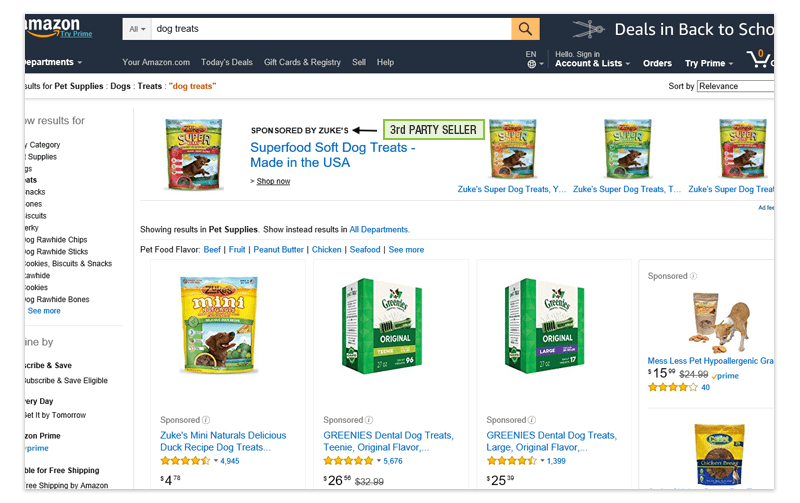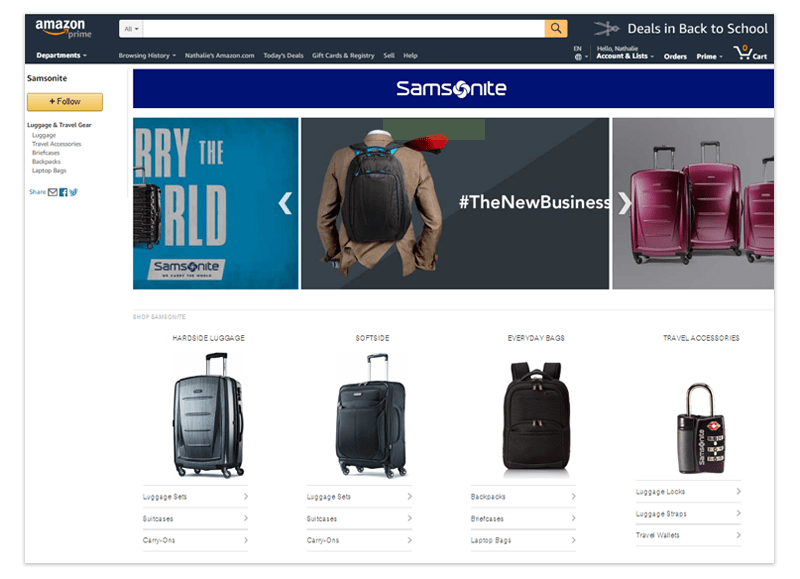
Amazon Expands its Advertising Options
Amazon is in the news almost every day as it grows its empire in broad strokes. For many businesses, this is concerning – with the wide array of products they sell, Amazon’s in competition with just about everyone. But one of the big directions they’re moving in is one that can benefit a lot of the businesses currently worried. The online behemoth is working hard to grow their advertising platform, profiting off helping other businesses sell more while at the same time continuing to make money off the many products sold through their website.
How Amazon is Expanding Their Advertising Program
While Amazon is much newer to the programmatic advertising game than its biggest competitors in the space, Google and Facebook, they’re clearly making moves to become more competitive. Their platform’s not yet as well developed and tested, but they’ve been regularly announcing updates that accomplish two main things: making advertising on Amazon more efficient, and providing a broader array of advertising options to brands.
More Efficient Advertising
Amazon has made a number of improvements designed to make using their platform easier for companies.
- Self-serve advertising – To save brands the trouble of having to go through an Amazon representative for every campaign or advertising decision, Amazon is increasing the options they provide that advertisers can access on their own. Being able to create and launch campaigns directly through their platform simplifies the process and lowers the barriers to entry.
- Easier bidding – Amazon has also been working on improvements to make bidding easier and more efficient on the platform, so advertisers can stay on top of their campaigns with less time and effort.
- Audience matching – Both Google and Facebook are known for having great audience targeting features and Amazon has gotten in on that game as well. Their Advertiser Audiences feature gives companies the power to focus their ads on audience segments based on Amazon’s extensive data. The recent feature has already helped early users double click-through rates and more than quadruple purchase rates.
All of these improvements point toward a general desire to encourage more brands to do more of their programmatic advertising with Amazon. Giving advertisers more control along with a greater ease of use provides an incentive to move a bigger portion of their budget over to Amazon’s platform.
More Advertising Options
The other big category of improvements Amazon’s using to entice more advertisers is broadening the advertising options they make available.
-
- Headline search ads – Amazon has opened up their powerful headline search ads to third-party sellers. Even if you’re not an Amazon vendor, you can now claim those valuable slots above the main listings on an Amazon search results page.

- Advertising options for brands not selling through Amazon – Previously, brands would have to be selling products through Amazon in order to take advantage of any of their advertising products. Now you can use Amazon’s advertising platform whether or not you sell items through the website.
- Ads on sites in Amazon’s network – In addition to ads on Amazon.com itself, brands that participate on Amazon’s advertising platform will also have the ability to advertise on other Amazon properties, like IMDB and Zappo’s.
- Amazon influencer program – For companies interested in influencer marketing, Amazon has launched their own influencer program that makes it easier for customers to browse products recommended by someone they follow and respect on social media. While right now, the program is focused on reaching the influencers themselves – not connecting influencers with brands – it’s one more way Amazon is staying on top of marketing trends.
- Amazon Spark – Branching into the social media space (because they can’t leave any space untouched), Amazon recently released Amazon Spark which is a shoppable image feed that users can access in the Amazon app. It’s easy to scroll and browse through and feels similar to image-heavy social media sites such as Instagram, but you can get to the product page for anything you see in a picture by simply clicking on it. While advertisers can’t get images directly into the feed yet, they can work with influencers to do so for now and, if Spark is successful, Amazon could open it up to brands at some point down the line.
- Amazon brand stores – One of the downsides of listing your products on Amazon has traditionally been losing your own branding in the process, you instead get swallowed up under the Amazon brand. One option Amazon’s offering to help with that concern is brand stores that allow you to create a brand-focused experience within the Amazon platform. You can craft a page that includes your logo, images, videos, and a listing of different products sold by your brand.

More ad opportunities give brands more ways to reach their customers and more data on what works best. And of course, it gives Amazon more opportunities for revenue.
Amazon Now a Key Player in PPC
All of this adds up to Amazon becoming one of the most important advertising platforms for businesses today. They’ve already surpassed Google as the first place people go online when they’re looking for a product and they’re clearly positioning themselves to be a prime competitor with Google’s PPC offerings.
The number of regular searches in Amazon is a strong reason to consider branching into Amazon advertising, but it’s not the only one. Amazon has been a go-to site for millions of shoppers for many years – that means the company has huge amounts of data on not only who their customers are, but more importantly what they buy and what types of displays and ads push them to the point of purchase. When you advertise with them, you tap into some of that extensive knowledge.
As a side bonus, you can generally trust that your Amazon ads won’t show up alongside any offensive content. Many brands, including Amazon itself, have recently found themselves on the wrong side of protests and boycotts due to ads showing up on sites consumers deem offensive. When your ads show up on Amazon or other shopping sites rather than media properties that could venture into controversial content, you’re more likely to stay on the right side of concerned consumers.
All that said, Amazon is still newer to this game than their main competitors. They’re still figuring out what works and consistently trying to improve the advertiser’s experience with new features and design improvements. Their platform probably won’t be as intuitive to you as those of sites like Google and Facebook that have been at it for a while and you won’t find as many specialists with extensive experience in Amazon ads or articles with years of data showing what works. Brands are still at the stage of largely having to figure it out as they go, but that’s always how it starts with a new advertising platform.
Many businesses already see it as a no brainer to devote part of their marketing budget each year to PPC ads on the main search engines, but not as many are thinking about Amazon advertising yet. That’s very likely to change soon and early adopters will benefit from getting better data faster that helps improve those Amazon campaigns over time. If you’re dragging your feet on adding Amazon to your list of advertising tactics, it’s a good time to reconsider.




